class: center, middle 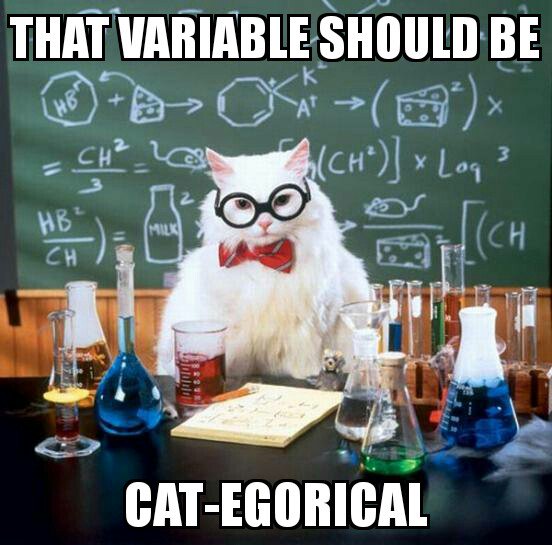 ## Models with Categorical Variables --- # So, We've Done this Linear Deliciousness `$$y_i = \beta_0 + \beta_1 x_i + \epsilon_i$$` `$$\epsilon_i \sim \mathcal{N}(0, \sigma)$$` <img src="categorical_predictors_files/figure-html/pp-1.png" style="display: block; margin: auto;" /> --- # And We've Seen Many Predictors `$$y_i = \beta_0 + \sum^K_{j=1}\beta_j x_{ij} + \epsilon_i$$` <img src="categorical_predictors_files/figure-html/pp_mlr-1.png" style="display: block; margin: auto;" /> --- # What if our X Variable Is Categorical? ### Comparing Two Means <img src="categorical_predictors_files/figure-html/unnamed-chunk-1-1.png" style="display: block; margin: auto;" /> -- `$$mass_i = \beta_0 + \beta_1 sex_i + \epsilon_i$$` --- # What if it Has Many Levels ### Comparing Many Means <img src="categorical_predictors_files/figure-html/unnamed-chunk-2-1.png" style="display: block; margin: auto;" /> -- `$$mass_i = \beta_1 adelie_i + \beta_2 chinstrap_i + \beta_3 gentoo_i + \epsilon_i$$` --- # Different Types of Categories? ### Comparing Many Means in Many categories <img src="categorical_predictors_files/figure-html/unnamed-chunk-3-1.png" style="display: block; margin: auto;" /> -- `$$mass_i = \beta_1 adelie_i + \beta_2 chinstrap_i + \beta_3 gentoo_i + \beta_4 male_i + \epsilon_i$$` --- class:center 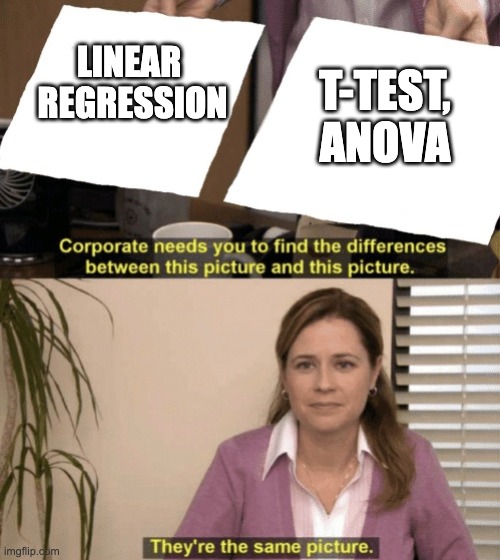 --- # Dummy Codding for Dummy Models 1. The Categorical as Continuous 2. Many Levels of One Category 3. Interpretation of Categorical Results. 4. Querying Your Model to Compare Groups --- # We Know the Linear Model .large[ `$$y_i = \beta_0 + \beta_1 x_i + \epsilon_i$$` `$$\epsilon_i \sim N(0, \sigma)$$` ] But, what if `\(x_i\)` was just 0,1? --- # Consider Comparing Two Means #### Consider the Horned Lizard .center[ 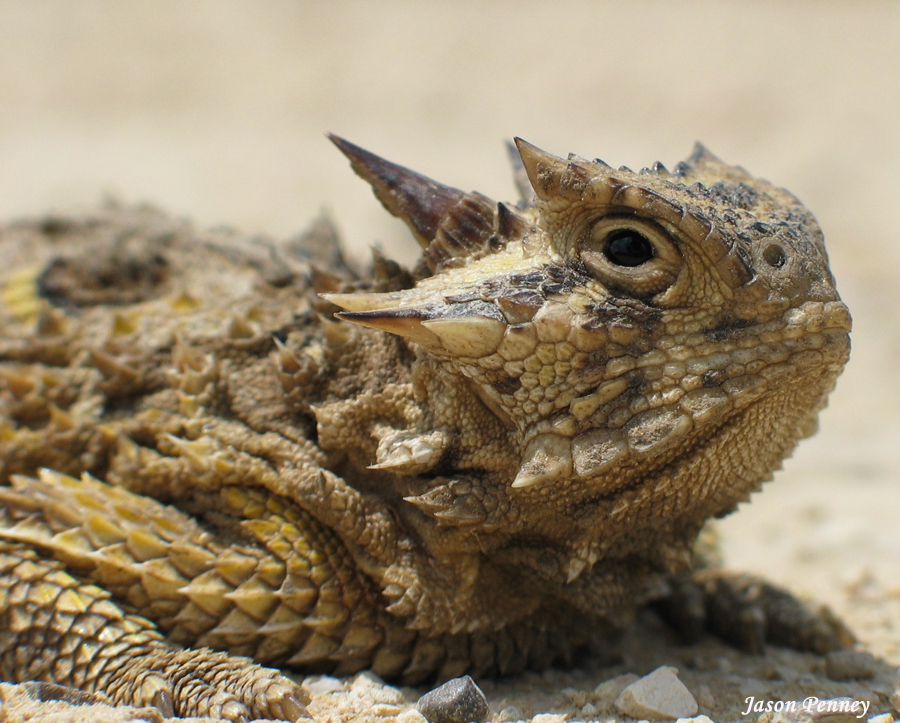 ] Horns prevent these lizards from being eaten by birds. Are horn lengths different between living and dead lizards, indicating selection pressure? --- class: center, middle background-image: url("./images/09/gosset.jpg") background-position: center background-size: cover --- # The Data <img src="categorical_predictors_files/figure-html/lizard_load-1.png" style="display: block; margin: auto;" /> --- # Looking at Means and SE <img src="categorical_predictors_files/figure-html/lizard_mean-1.png" style="display: block; margin: auto;" /> --- # What is Really Going On? <img src="categorical_predictors_files/figure-html/lizard_mean-1.png" style="display: block; margin: auto;" /> -- What if we think of Dead = 0, Living = 1 --- # Let's look at it a different way .center[ 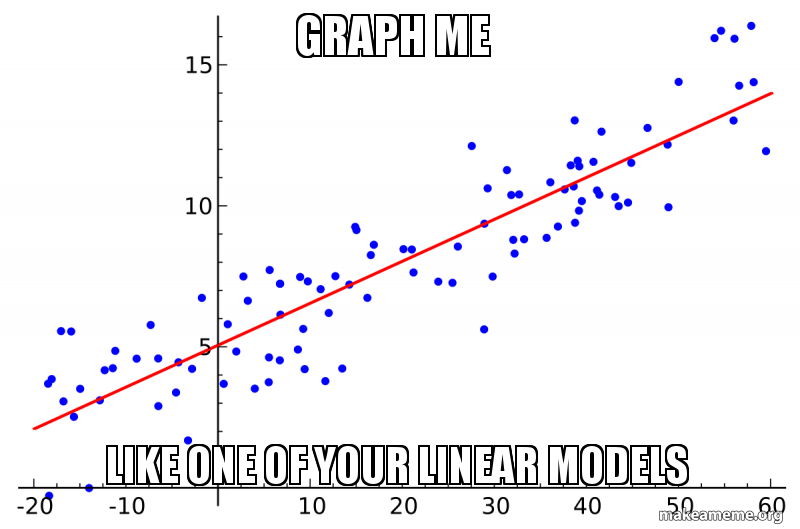 ] --- # First, Recode the Data with Dummy Variables <table class="table" style="color: black; margin-left: auto; margin-right: auto;"> <thead> <tr> <th style="text-align:right;"> Squamosal horn length </th> <th style="text-align:right;"> Survive </th> <th style="text-align:left;"> Status </th> </tr> </thead> <tbody> <tr> <td style="text-align:right;"> 13.1 </td> <td style="text-align:right;"> 1 </td> <td style="text-align:left;"> Living </td> </tr> <tr> <td style="text-align:right;"> 15.2 </td> <td style="text-align:right;"> 0 </td> <td style="text-align:left;"> Dead </td> </tr> <tr> <td style="text-align:right;"> 15.5 </td> <td style="text-align:right;"> 0 </td> <td style="text-align:left;"> Dead </td> </tr> <tr> <td style="text-align:right;"> 15.7 </td> <td style="text-align:right;"> 1 </td> <td style="text-align:left;"> Living </td> </tr> <tr> <td style="text-align:right;"> 17.2 </td> <td style="text-align:right;"> 0 </td> <td style="text-align:left;"> Dead </td> </tr> <tr> <td style="text-align:right;"> 17.7 </td> <td style="text-align:right;"> 1 </td> <td style="text-align:left;"> Living </td> </tr> </tbody> </table> --- # First, Recode the Data with Dummy Variables <table class="table" style="color: black; margin-left: auto; margin-right: auto;"> <thead> <tr> <th style="text-align:right;"> Squamosal horn length </th> <th style="text-align:right;"> Survive </th> <th style="text-align:left;"> Status </th> <th style="text-align:right;"> StatusDead </th> <th style="text-align:right;"> StatusLiving </th> </tr> </thead> <tbody> <tr> <td style="text-align:right;"> 13.1 </td> <td style="text-align:right;"> 1 </td> <td style="text-align:left;"> Living </td> <td style="text-align:right;"> 0 </td> <td style="text-align:right;"> 1 </td> </tr> <tr> <td style="text-align:right;"> 15.2 </td> <td style="text-align:right;"> 0 </td> <td style="text-align:left;"> Dead </td> <td style="text-align:right;"> 1 </td> <td style="text-align:right;"> 0 </td> </tr> <tr> <td style="text-align:right;"> 15.5 </td> <td style="text-align:right;"> 0 </td> <td style="text-align:left;"> Dead </td> <td style="text-align:right;"> 1 </td> <td style="text-align:right;"> 0 </td> </tr> <tr> <td style="text-align:right;"> 15.7 </td> <td style="text-align:right;"> 1 </td> <td style="text-align:left;"> Living </td> <td style="text-align:right;"> 0 </td> <td style="text-align:right;"> 1 </td> </tr> <tr> <td style="text-align:right;"> 17.2 </td> <td style="text-align:right;"> 0 </td> <td style="text-align:left;"> Dead </td> <td style="text-align:right;"> 1 </td> <td style="text-align:right;"> 0 </td> </tr> <tr> <td style="text-align:right;"> 17.7 </td> <td style="text-align:right;"> 1 </td> <td style="text-align:left;"> Living </td> <td style="text-align:right;"> 0 </td> <td style="text-align:right;"> 1 </td> </tr> </tbody> </table> --- # But with an Intercept, we don't need Two Dummy Variables <table class="table" style="color: black; margin-left: auto; margin-right: auto;"> <thead> <tr> <th style="text-align:right;"> Squamosal horn length </th> <th style="text-align:right;"> Survive </th> <th style="text-align:left;"> Status </th> <th style="text-align:right;"> (Intercept) </th> <th style="text-align:right;"> StatusLiving </th> </tr> </thead> <tbody> <tr> <td style="text-align:right;"> 13.1 </td> <td style="text-align:right;"> 1 </td> <td style="text-align:left;"> Living </td> <td style="text-align:right;"> 1 </td> <td style="text-align:right;"> 1 </td> </tr> <tr> <td style="text-align:right;"> 15.2 </td> <td style="text-align:right;"> 0 </td> <td style="text-align:left;"> Dead </td> <td style="text-align:right;"> 1 </td> <td style="text-align:right;"> 0 </td> </tr> <tr> <td style="text-align:right;"> 15.5 </td> <td style="text-align:right;"> 0 </td> <td style="text-align:left;"> Dead </td> <td style="text-align:right;"> 1 </td> <td style="text-align:right;"> 0 </td> </tr> <tr> <td style="text-align:right;"> 15.7 </td> <td style="text-align:right;"> 1 </td> <td style="text-align:left;"> Living </td> <td style="text-align:right;"> 1 </td> <td style="text-align:right;"> 1 </td> </tr> <tr> <td style="text-align:right;"> 17.2 </td> <td style="text-align:right;"> 0 </td> <td style="text-align:left;"> Dead </td> <td style="text-align:right;"> 1 </td> <td style="text-align:right;"> 0 </td> </tr> <tr> <td style="text-align:right;"> 17.7 </td> <td style="text-align:right;"> 1 </td> <td style="text-align:left;"> Living </td> <td style="text-align:right;"> 1 </td> <td style="text-align:right;"> 1 </td> </tr> </tbody> </table> -- .center[This is known as a Treatment Contrast structure] --- # This is Just a Linear Regression <img src="categorical_predictors_files/figure-html/unnamed-chunk-4-1.png" style="display: block; margin: auto;" /> `$$Length_i = \beta_0 + \beta_1 Status_i + \epsilon_i$$` --- # You're Not a Dummy, Even If You Code a Dummy Variable `$$Length_i = \beta_0 + \beta_1 Status_i + \epsilon_i$$` - Setting `\(Status_i\)` to 0 or 1 (Dead or Living) is called Dummy Coding - Or One Hot Encoding in the ML world. -- - We can always turn groups into "Dummy" 0 or 1 -- - We could even fit a model with no `\(\beta_0\)` and code Dead = 0 or 1 and Living = 0 or 1 -- - This approach works for any **unordered categorical (nominal) variable** --- class: center, middle ## The Only New Assumption-Related Thing is a More Gimlet Eye on Homogeneity of Variance --- # Homogeneity of Variance Important for CI Estimation <img src="categorical_predictors_files/figure-html/unnamed-chunk-5-1.png" style="display: block; margin: auto;" /> --- # Dummy Codding for Dummy Models 1. The Categorical as Continuous. 2. .red[Many Levels of One Category] 3. Interpretation of Categorical Results. 4. Querying Your Model to Compare Groups --- # Categorical Predictors: Gene Expression and Mental Disorders .pull-left[ 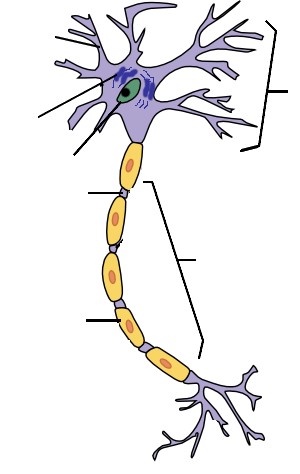 ] .pull-right[ 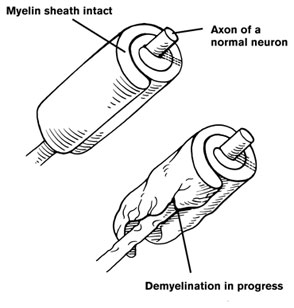 ] --- # The data <img src="categorical_predictors_files/figure-html/boxplot-1.png" style="display: block; margin: auto;" /> --- # Traditional Way to Think About Categories <img src="categorical_predictors_files/figure-html/meansplot-1.png" style="display: block; margin: auto;" /> What is the variance between groups v. within groups? --- # If We Only Had Control v. Bipolar... <img src="categorical_predictors_files/figure-html/brainGene_points-1.png" style="display: block; margin: auto;" /> --- # If We Only Had Control v. Bipolar... <img src="categorical_predictors_files/figure-html/brainGene_points_fit-1.png" style="display: block; margin: auto;" /> -- Underlying linear model with control = intercept, dummy variable for bipolar --- # If We Only Had Control v. Bipolar... <img src="categorical_predictors_files/figure-html/brainGene_points_fit1-1.png" style="display: block; margin: auto;" /> Underlying linear model with control = intercept, dummy variable for bipolar --- # If We Only Had Control v. Schizo... <img src="categorical_predictors_files/figure-html/brainGene_points_fit_2-1.png" style="display: block; margin: auto;" /> Underlying linear model with control = intercept, dummy variable for schizo --- # If We Only Had Control v. Schizo... <img src="categorical_predictors_files/figure-html/ctl_schizo-1.png" style="display: block; margin: auto;" /> Underlying linear model with control = intercept, dummy variable for schizo --- # Linear Dummy Variable (Fixed Effect) Model `$$\large y_{ij} = \beta_{0} + \sum \beta_{j}x_{ij} + \epsilon_{ij}, \qquad x_{i} = 0,1$$` - i = replicate, j = group -- - `\(x_{ij}\)` inidicates presence/abscence (1/0) of level j for individual i - A **Dummy variable** -- - This is the multiple predictor extension of a two-category model -- - All categories are *orthogonal* -- - One category set to `\(\beta_{0}\)` for ease of fitting, and other `\(\beta\)`s are different from it --- # A Simpler Way to Write: The Means Model `$$\large y_{ij} = \alpha_{j} + \epsilon_{ij}$$` `$$\epsilon_{ij} \sim N(0, \sigma^{2} )$$` - i = replicate, j = group - Different mean for each group - Focus is on specificity of a categorical predictor --- # Partioning Model to See What Varies `$$\large y_{ij} = \bar{y} + (\bar{y}_{j} - \bar{y}) + ({y}_{ij} - \bar{y}_{j})$$` - i = replicate, j = group - Shows partitioning of variation - Between group v. within group variation -- - Consider `\(\bar{y}\)` an intercept, deviations from intercept by treatment, and residuals -- - Can Calculate this with a fit model to answer questions - it's a relic of a bygone era - That bygone era has some good papers, so, you should recognize this --- # Let's Fit that Model **Using Least Squares** ``` r brain_lm <- lm(PLP1.expression ~ group, data=brainGene) tidy(brain_lm) |> select(-c(4:5)) |> knitr::kable(digits = 3) |> kableExtra::kable_styling() ``` <table class="table" style="color: black; margin-left: auto; margin-right: auto;"> <thead> <tr> <th style="text-align:left;"> term </th> <th style="text-align:right;"> estimate </th> <th style="text-align:right;"> std.error </th> </tr> </thead> <tbody> <tr> <td style="text-align:left;"> (Intercept) </td> <td style="text-align:right;"> -0.004 </td> <td style="text-align:right;"> 0.048 </td> </tr> <tr> <td style="text-align:left;"> groupschizo </td> <td style="text-align:right;"> -0.191 </td> <td style="text-align:right;"> 0.068 </td> </tr> <tr> <td style="text-align:left;"> groupbipolar </td> <td style="text-align:right;"> -0.259 </td> <td style="text-align:right;"> 0.068 </td> </tr> </tbody> </table> --- # Dummy Codding for Dummy Models 1. The Categorical as Continuous 2. Many Levels of One Category 3. .red[Interpretation of Categorical Results] 4. Querying Your Model to Compare Groups --- # R Fits with Treatment Contrasts `$$y_{ij} = \beta_{0} + \sum \beta_{j}x_{ij} + \epsilon_{ij}$$` <table class="table" style="color: black; margin-left: auto; margin-right: auto;"> <thead> <tr> <th style="text-align:left;"> term </th> <th style="text-align:right;"> estimate </th> <th style="text-align:right;"> std.error </th> </tr> </thead> <tbody> <tr> <td style="text-align:left;"> (Intercept) </td> <td style="text-align:right;"> -0.004 </td> <td style="text-align:right;"> 0.048 </td> </tr> <tr> <td style="text-align:left;"> groupschizo </td> <td style="text-align:right;"> -0.191 </td> <td style="text-align:right;"> 0.068 </td> </tr> <tr> <td style="text-align:left;"> groupbipolar </td> <td style="text-align:right;"> -0.259 </td> <td style="text-align:right;"> 0.068 </td> </tr> </tbody> </table> -- What does this mean? -- - Intercept ( `\(\beta_{0}\)` ) = the average value associated with being in the control group - Others = the average difference between control and each other group - Note: Order is alphabetical --- # Actual Group Means `$$y_{ij} = \alpha_{j} + \epsilon_{ij}$$` <table class="table" style="color: black; margin-left: auto; margin-right: auto;"> <thead> <tr> <th style="text-align:left;"> group </th> <th style="text-align:right;"> estimate </th> <th style="text-align:right;"> std.error </th> </tr> </thead> <tbody> <tr> <td style="text-align:left;"> control </td> <td style="text-align:right;"> -0.0040000 </td> <td style="text-align:right;"> 0.0479786 </td> </tr> <tr> <td style="text-align:left;"> schizo </td> <td style="text-align:right;"> -0.1953333 </td> <td style="text-align:right;"> 0.0479786 </td> </tr> <tr> <td style="text-align:left;"> bipolar </td> <td style="text-align:right;"> -0.2626667 </td> <td style="text-align:right;"> 0.0479786 </td> </tr> </tbody> </table> -- What does this mean? -- Being in group j is associated with an average outcome of y. --- # What's the best way to see this? .center[ ] --- # Many Ways to Visualize <img src="categorical_predictors_files/figure-html/unnamed-chunk-7-1.png" style="display: block; margin: auto;" /> --- # Many Ways to Visualize <img src="categorical_predictors_files/figure-html/unnamed-chunk-8-1.png" style="display: block; margin: auto;" /> --- # Many Ways to Visualize <img src="categorical_predictors_files/figure-html/unnamed-chunk-9-1.png" style="display: block; margin: auto;" /> --- # How Well Do Groups Explain Variation in Response Data? We can look at fit to data - even in categorical data! ``` # R2 for Linear Regression R2: 0.271 adj. R2: 0.237 ``` -- But, remember, this is based on the sample at hand. -- Adjusted R<sup>2</sup>: adjusts for sample size and model complexity (k = # params = # groups) `$$R^2_{adj} = 1 - \frac{(1-R^2)(n-1)}{n-k-1}$$` --- # Dummy Codding for Dummy Models 1. The Categorical as Continuous 2. Many Levels of One Category 3. Interpretation of Categorical Results. 4. .red[Querying Your Model to Compare Groups] --- # Which groups are different from each other? <img src="categorical_predictors_files/figure-html/meansplot-1.png" style="display: block; margin: auto;" /> -- Many mini-linear models with two means....multiple comparisons! --- # Post-Hoc Means Comparisons: Which groups are different from one another? - Each group has a mean and SE -- - We can calculate a comparison for each -- - BUT, we lose precision as we keep resampling the model -- - Remember, for every time we look at a system, we have some % of our CI not overlapping the true value -- - Each time we compare means, we have a chance of our CI not covering the true value -- - To minimize this possibility, we correct (widen) our CIs for this **Family-Wise Error Rate** --- # Solutions to Multiple Comparisons and Family-wise Error Rate? 1. Ignore it - + Just a bunch of independent linear models -- 2. Increase your CI given m = # of comparisons + If 1 - CI of interest = `\(\alpha\)` + Bonferroni Correction `\(\alpha/ = \alpha/m\)` + False Discovery Rate `\(\alpha/ = k\alpha/m\)` where k is rank of test -- 3. Other multiple comparison corrections + Tukey's Honestly Significant Difference + Dunnett's Compare to Control --- # No Correction: Least Square Differences <table class="table table-striped" style="color: black; margin-left: auto; margin-right: auto;"> <thead> <tr> <th style="text-align:left;"> contrast </th> <th style="text-align:right;"> estimate </th> <th style="text-align:right;"> conf.low </th> <th style="text-align:right;"> conf.high </th> </tr> </thead> <tbody> <tr> <td style="text-align:left;"> control - schizo </td> <td style="text-align:right;"> 0.1913333 </td> <td style="text-align:right;"> 0.0544024 </td> <td style="text-align:right;"> 0.3282642 </td> </tr> <tr> <td style="text-align:left;"> control - bipolar </td> <td style="text-align:right;"> 0.2586667 </td> <td style="text-align:right;"> 0.1217358 </td> <td style="text-align:right;"> 0.3955976 </td> </tr> <tr> <td style="text-align:left;"> schizo - bipolar </td> <td style="text-align:right;"> 0.0673333 </td> <td style="text-align:right;"> -0.0695976 </td> <td style="text-align:right;"> 0.2042642 </td> </tr> </tbody> </table> --- # Bonferroni Corrections <table class="table table-striped" style="color: black; margin-left: auto; margin-right: auto;"> <thead> <tr> <th style="text-align:left;"> contrast </th> <th style="text-align:right;"> estimate </th> <th style="text-align:right;"> conf.low </th> <th style="text-align:right;"> conf.high </th> </tr> </thead> <tbody> <tr> <td style="text-align:left;"> control - schizo </td> <td style="text-align:right;"> 0.1913333 </td> <td style="text-align:right;"> 0.0221330 </td> <td style="text-align:right;"> 0.3605337 </td> </tr> <tr> <td style="text-align:left;"> control - bipolar </td> <td style="text-align:right;"> 0.2586667 </td> <td style="text-align:right;"> 0.0894663 </td> <td style="text-align:right;"> 0.4278670 </td> </tr> <tr> <td style="text-align:left;"> schizo - bipolar </td> <td style="text-align:right;"> 0.0673333 </td> <td style="text-align:right;"> -0.1018670 </td> <td style="text-align:right;"> 0.2365337 </td> </tr> </tbody> </table> --- # Tukey's Honestly Significant Difference <table class="table table-striped" style="color: black; margin-left: auto; margin-right: auto;"> <thead> <tr> <th style="text-align:left;"> contrast </th> <th style="text-align:right;"> estimate </th> <th style="text-align:right;"> conf.low </th> <th style="text-align:right;"> conf.high </th> </tr> </thead> <tbody> <tr> <td style="text-align:left;"> control - schizo </td> <td style="text-align:right;"> 0.1913333 </td> <td style="text-align:right;"> 0.0264873 </td> <td style="text-align:right;"> 0.3561793 </td> </tr> <tr> <td style="text-align:left;"> control - bipolar </td> <td style="text-align:right;"> 0.2586667 </td> <td style="text-align:right;"> 0.0938207 </td> <td style="text-align:right;"> 0.4235127 </td> </tr> <tr> <td style="text-align:left;"> schizo - bipolar </td> <td style="text-align:right;"> 0.0673333 </td> <td style="text-align:right;"> -0.0975127 </td> <td style="text-align:right;"> 0.2321793 </td> </tr> </tbody> </table> --- # Visualizing Comparisons (Tukey) <img src="categorical_predictors_files/figure-html/tukey-viz-1.png" style="display: block; margin: auto;" /> --- # Dunnett's Comparison to Controls <table class="table table-striped" style="color: black; margin-left: auto; margin-right: auto;"> <thead> <tr> <th style="text-align:left;"> contrast </th> <th style="text-align:right;"> estimate </th> <th style="text-align:right;"> conf.low </th> <th style="text-align:right;"> conf.high </th> </tr> </thead> <tbody> <tr> <td style="text-align:left;"> schizo - control </td> <td style="text-align:right;"> -0.1913333 </td> <td style="text-align:right;"> -0.3474491 </td> <td style="text-align:right;"> -0.0352176 </td> </tr> <tr> <td style="text-align:left;"> bipolar - control </td> <td style="text-align:right;"> -0.2586667 </td> <td style="text-align:right;"> -0.4147824 </td> <td style="text-align:right;"> -0.1025509 </td> </tr> </tbody> </table> <img src="categorical_predictors_files/figure-html/dunnett-1.png" style="display: block; margin: auto;" /> --- # So, Categorical Models... - At the end of the day, they are just another linear model - We can understand a lot about groups, though - We can begin to see the value of queries/counterfactuals `$$\widehat {\textbf{Y} } = \textbf{X}\beta$$` `$$\textbf{Y} \sim \mathcal{N}(\widehat {\textbf{Y} }, \Sigma)$$`